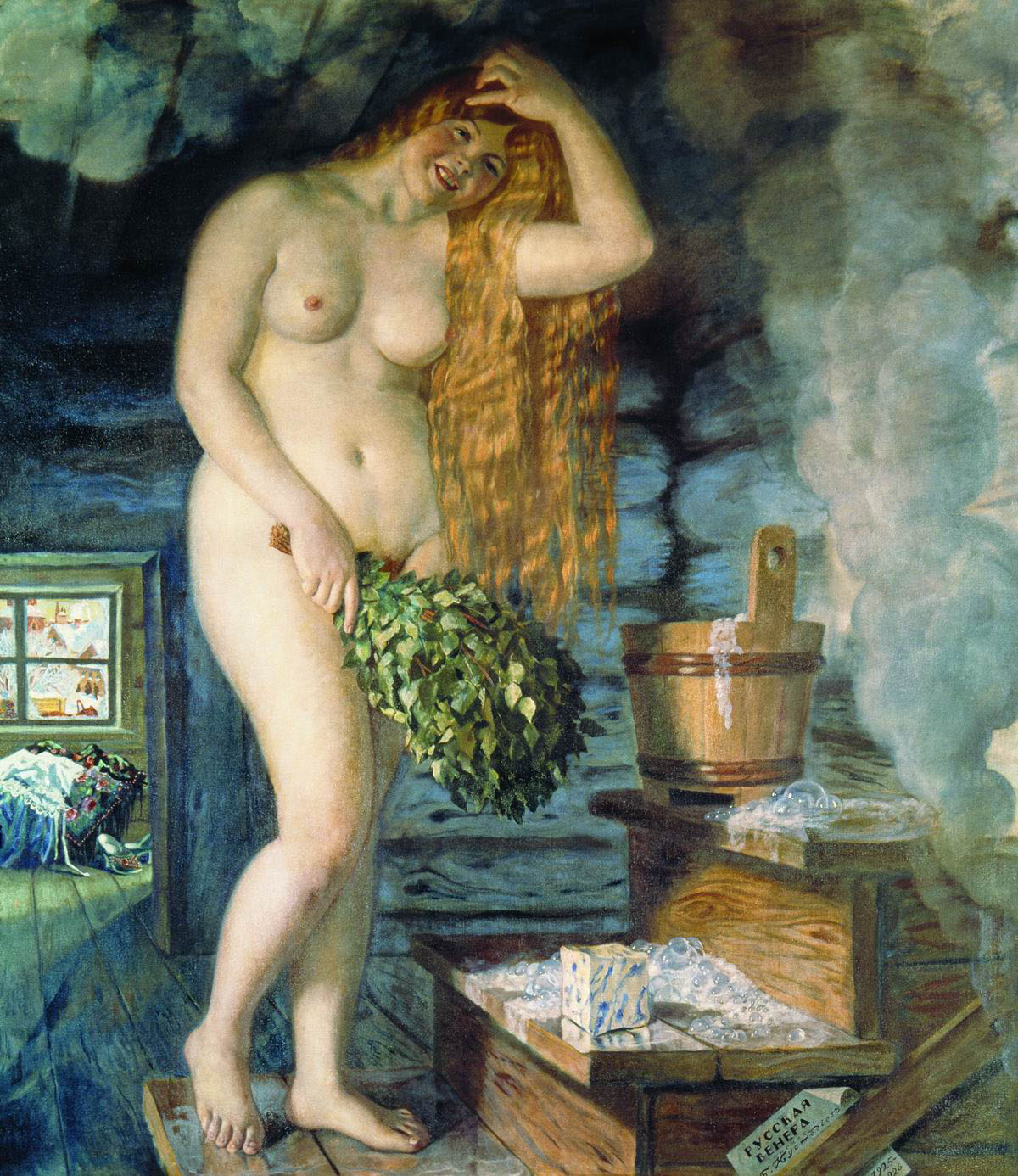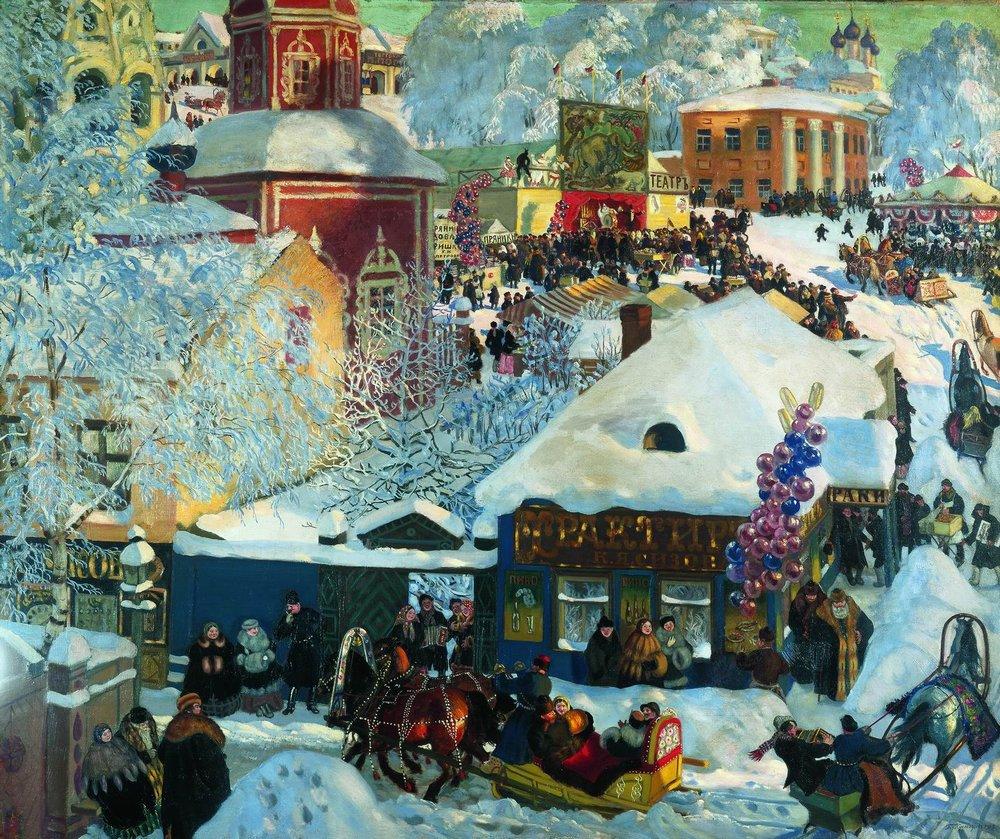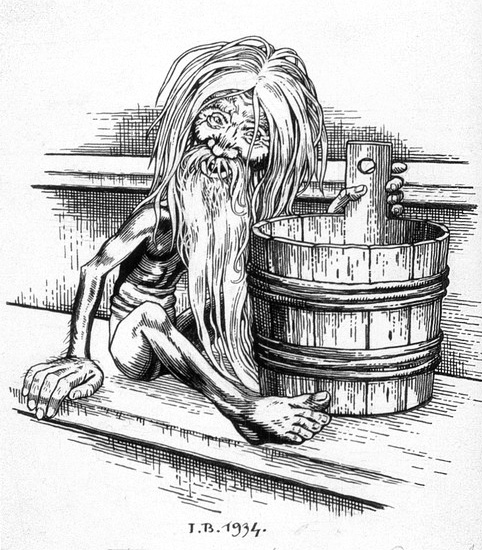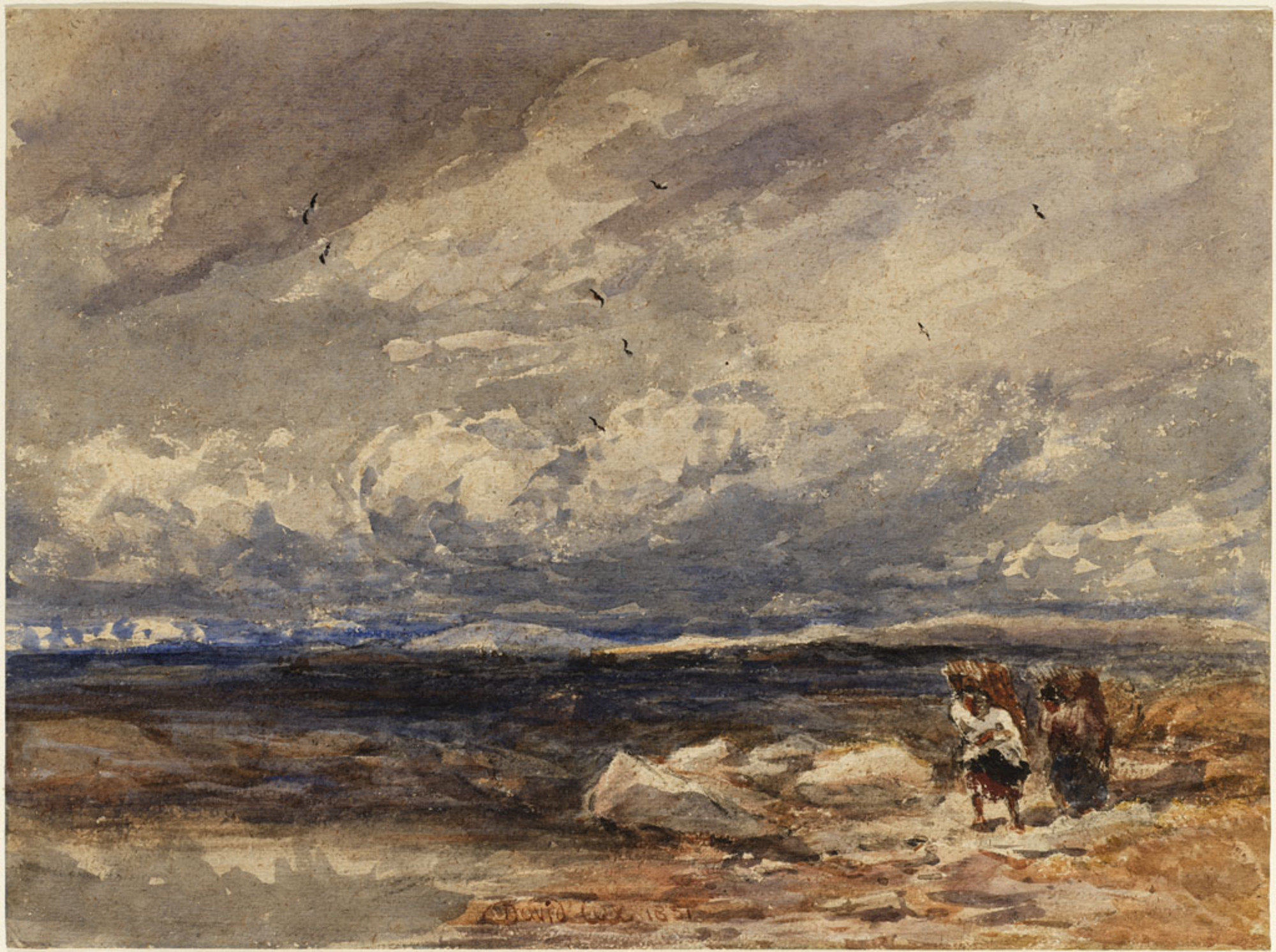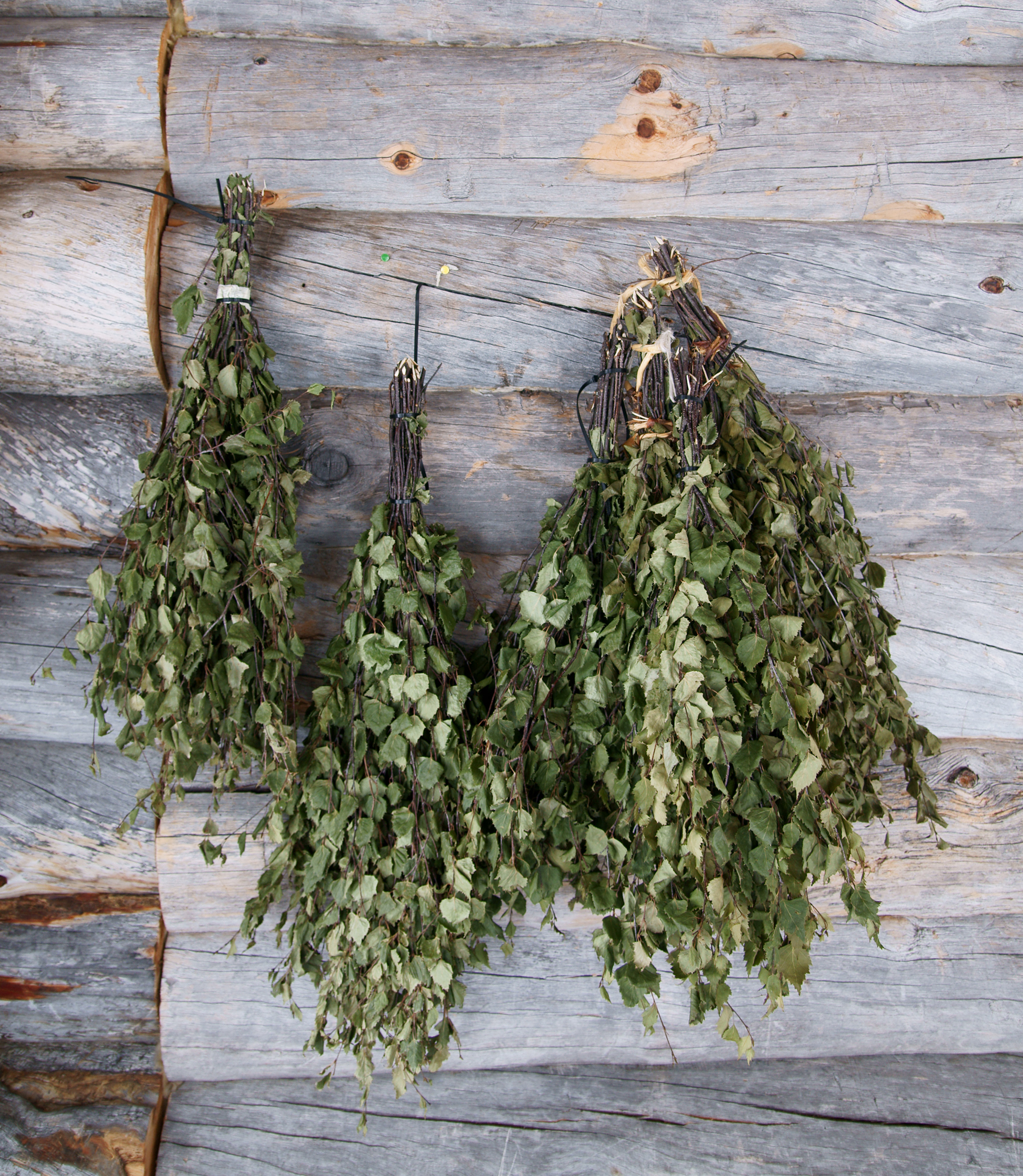|
Russian Bath
A ''banya'' ( rus, баня, p=ˈbanʲə, a=Ru-баня.ogg) is originally a Russian steam bath with a wood stove. It is considered an important part of Russian culture. The bath takes place in a small room or building designed for dry or wet heat sessions. The steam and high heat make the bathers perspire. Genders were traditionally segregated in the ''banya'', with separate rooms for the sexes. In the Russian language, the word ''banya'' may also refer to a public bathhouse, the most historically famous being the Sanduny (''Sandunovskie bani''). History A mention of the ''banya'' is found in the ''Radziwiłł Chronicle'' in the story of Princess Olga's revenge for the murder of her husband, Prince Igor, by the Slavic tribe of Drevlians in 945 AD. The leader of the Drevlians had hopes of marrying the widow Olga and sent messengers to discuss the idea. "When the Drevlians arrived, Olga commanded that a bath should be made ready for them and said, 'Wash yourselves and come t ... [...More Info...] [...Related Items...] OR: [Wikipedia] [Google] [Baidu] |
Kustodiev Russian Venus
Boris Mikhaylovich Kustodiev (russian: Бори́с Миха́йлович Кусто́диев; – 28 May 1927) was a Russian and Soviet painter and stage designer. Early life Boris Kustodiev was born in Astrakhan into the family of a professor of philosophy, history of literature, and logic at the local theological seminary. His father died young, and all financial and material burdens fell on his mother's shoulders. The Kustodiev family rented a small wing in a rich merchant's house. It was there that the boy's first impressions were formed of the way of life of the provincial merchant class. The artist later wrote, "The whole tenor of the rich and plentiful merchant way of life was there right under my nose... It was like something out of an Ostrovsky play." The artist retained these childhood observations for years, recreating them later in oils and water-colours. Art studies Between 1893 and 1896, Kustodiev studied in theological seminary and took private art lessons i ... [...More Info...] [...Related Items...] OR: [Wikipedia] [Google] [Baidu] |
Novgorod
Veliky Novgorod ( rus, links=no, Великий Новгород, t=Great Newtown, p=vʲɪˈlʲikʲɪj ˈnovɡərət), also known as just Novgorod (), is the largest city and administrative centre of Novgorod Oblast, Russia. It is one of the oldest cities in Russia, being first mentioned in the 9th century. The city lies along the Volkhov River just downstream from its outflow from Lake Ilmen and is situated on the M10 federal highway connecting Moscow and Saint Petersburg. UNESCO recognized Novgorod as a World Heritage Site in 1992. The city has a population of At its peak during the 14th century, the city was the capital of the Novgorod Republic and was one of Europe's largest cities. The "Veliky" ("great") part was added to the city's name in 1999. History Early developments The Sofia First Chronicle makes initial mention of it in 859, while the Novgorod First Chronicle first mentions it in 862, when it was purportedly already a major Baltics-to-Byzantium station ... [...More Info...] [...Related Items...] OR: [Wikipedia] [Google] [Baidu] |
Bannik
The Bannik () is a bathhouse ('' banya'') spirit in Slavic mythology.Alexinsky, G. ''Slavonic Mythology'' in ''New Larousse Encyclopedia of Mythology''. Prometheus Press, 1973, p. 287-88 He is usually described as a small, naked old man with a long beard, his body covered in the birch leaves left over from well used bath brooms. Many accounts also claim that he is a shapeshifter and can appear as a local person to someone who stumbles across him, or even as a stone or coal in the oven heating the bathhouse. Slavic bathhouses resemble saunas, with an inner steaming room and an outer changing room. A place where women gave birth and practiced divinations, the bathhouse was strongly endowed with vital forces. The third firing (or fourth, depending on tradition) was reserved for the bannik, and, given his inclination to invite demons and forest spirits to share his bath, no Christian images were allowed lest they offend the occupants. If disturbed by an intruder while washing, the ban ... [...More Info...] [...Related Items...] OR: [Wikipedia] [Google] [Baidu] |
Rafia
Raffia palms (''Raphia'') are a genus of about twenty species of palms native to tropical regions of Africa, and especially Madagascar, with one species (''R. taedigera'') also occurring in Central and South America. ''R. taedigera'' is the source of raffia fibers, which are the veins of the leaves, and this species produces a fruit called "brazilia pods", "uxi nuts" or "uxi pods". They grow up to tall and are remarkable for their compound pinnate leaves, the longest in the plant kingdom; leaves of ''R. regalis'' up to long and wide are known. The plants are monocarpic, meaning that they flower once and then die after the seeds are mature. Some species have individual stems which die after fruiting, but have a root system which remains alive and sends up new stems which fruit. Cultivation and uses Fiber Raffia fiber is produced from the membrane on the underside of the leaf fronds. The membrane is taken off to create a long thin fiber, which can be rolled together for add ... [...More Info...] [...Related Items...] OR: [Wikipedia] [Google] [Baidu] |
Besom
A besom () is a broom, a household implement used for sweeping. The term is now mostly reserved for a traditional broom constructed from a bundle of twigs tied to a stout pole. The twigs used could be broom (i.e. '' Genista'', from which comes the modern name "broom" for the tool), heather or similar. The song "Buy Broom Buzzems" from Northern England refers to both types of twig. From the phrase ''broom besom'' the more common ''broom'' comes. In Scotland, besoms are still occasionally to be found at the edge of forests where they are stacked for use in early response to an outbreak of fire. Description As a result of its construction around a central pole, the brush of the besom is rounded instead of flat. The bristles can be made of many materials including, but not limited to straw, herbs, or twigs. Traditionally the handle is of hazel wood and the head is of birch twigs. Modern construction uses bindings of wire and string (instead of the traditional split withy) and the ... [...More Info...] [...Related Items...] OR: [Wikipedia] [Google] [Baidu] |
Banny Venik
Bath broom ( rus, банный веник, p=ˈbanːɨj ˈvʲenʲɪk; fi, vasta or '; et, viht); lt, vanta) is a besom, or broom, used for bathing in sauna A sauna (, ), or sudatory, is a small room or building designed as a place to experience dry or wet heat sessions, or an establishment with one or more of these facilities. The steam and high heat make the bathers perspire. A thermometer in a ...s, such as Russian banyas. See also * Birching * Venik References Further reading *Всё О Бане. Banya Reference Guide Bathing Finnish culture Russian culture {{Tool-stub ... [...More Info...] [...Related Items...] OR: [Wikipedia] [Google] [Baidu] |
Eucalyptus
''Eucalyptus'' () is a genus of over seven hundred species of flowering trees, shrubs or mallees in the myrtle family, Myrtaceae. Along with several other genera in the tribe Eucalypteae, including '' Corymbia'', they are commonly known as eucalypts. Plants in the genus ''Eucalyptus'' have bark that is either smooth, fibrous, hard or stringy, leaves with oil glands, and sepals and petals that are fused to form a "cap" or operculum over the stamens. The fruit is a woody capsule commonly referred to as a "gumnut". Most species of ''Eucalyptus'' are native to Australia, and every state and territory has representative species. About three-quarters of Australian forests are eucalypt forests. Wildfire is a feature of the Australian landscape and many eucalypt species are adapted to fire, and resprout after fire or have seeds which survive fire. A few species are native to islands north of Australia and a smaller number are only found outside the continent. Eucalypts have b ... [...More Info...] [...Related Items...] OR: [Wikipedia] [Google] [Baidu] |
White Birch
''Betula papyrifera'' (paper birch, also known as (American) white birch and canoe birch) is a short-lived species of birch native to northern North America. Paper birch is named for the tree's thin white bark, which often peels in paper like layers from the trunk. Paper birch is often one of the first species to colonize a burned area within the northern latitudes, and is an important species for moose browsing. The wood is often used for pulpwood and firewood. Description It is a medium-sized deciduous tree typically reaching tall, and exceptionally to with a trunk up to in diameter. Within forests, it often grows with a single trunk but when grown as a landscape tree it may develop multiple trunks or branch close to the ground. Paper birch is a typically short-lived species. It handles heat and humidity poorly and may live only 30 years in zones six and up, while trees in colder-climate regions can grow for more than 100 years. ''B. papyrifera'' will grow in many soi ... [...More Info...] [...Related Items...] OR: [Wikipedia] [Google] [Baidu] |
Artemisia Absinthium
''Artemisia absinthium'' (wormwood, grand wormwood, absinthe, absinthium, absinthe wormwood, mugwort, wermout, wermud, wormit, wormod) is a species of '' Artemisia'', native to temperate regions of Eurasia and North Africa, and widely naturalized in Canada and the northern United States. It is grown as an ornamental plant and is used as an ingredient in the spirit absinthe and some other alcoholic beverages. Etymology ''Artemisia'' comes from Ancient Greek ἀρτεμισία, from Ἄρτεμις (Artemis). In Hellenistic culture, Artemis was a goddess of the hunt, and protector of the forest and children. The name ''absinthum'' comes from the Ancient Greek ἀψίνθιον, meaning the same. An alternative derivation is that the genus was named after Queen Artemisia, who was the wife and sister of Mausolus, ruler of Caria. The word "wormwood" may come from Middle English ''wormwode'' or ''wermode''. Webster's Third New International Dictionary attributes the etymology to Old ... [...More Info...] [...Related Items...] OR: [Wikipedia] [Google] [Baidu] |
Banny Venik
Bath broom ( rus, банный веник, p=ˈbanːɨj ˈvʲenʲɪk; fi, vasta or '; et, viht); lt, vanta) is a besom, or broom, used for bathing in sauna A sauna (, ), or sudatory, is a small room or building designed as a place to experience dry or wet heat sessions, or an establishment with one or more of these facilities. The steam and high heat make the bathers perspire. A thermometer in a ...s, such as Russian banyas. See also * Birching * Venik References Further reading *Всё О Бане. Banya Reference Guide Bathing Finnish culture Russian culture {{Tool-stub ... [...More Info...] [...Related Items...] OR: [Wikipedia] [Google] [Baidu] |
Russian Banya
Russian(s) refers to anything related to Russia, including: *Russians (, ''russkiye''), an ethnic group of the East Slavic peoples, primarily living in Russia and neighboring countries *Rossiyane (), Russian language term for all citizens and people of Russia, regardless of ethnicity *Russophone, Russian-speaking person (, ''russkogovoryashchy'', ''russkoyazychny'') * Russian language, the most widely spoken of the Slavic languages * Russian alphabet * Russian cuisine *Russian culture *Russian studies Russian may also refer to: * Russian dressing *''The Russians'', a book by Hedrick Smith *Russian (comics), fictional Marvel Comics supervillain from ''The Punisher'' series * Russian (solitaire), a card game * "Russians" (song), from the album ''The Dream of the Blue Turtles'' by Sting *"Russian", from the album ''Tubular Bells 2003'' by Mike Oldfield *"Russian", from the album '' '' by Caravan Palace * Nik Russian, the perpetrator of a con committed in 2002 *The South African name ... [...More Info...] [...Related Items...] OR: [Wikipedia] [Google] [Baidu] |
